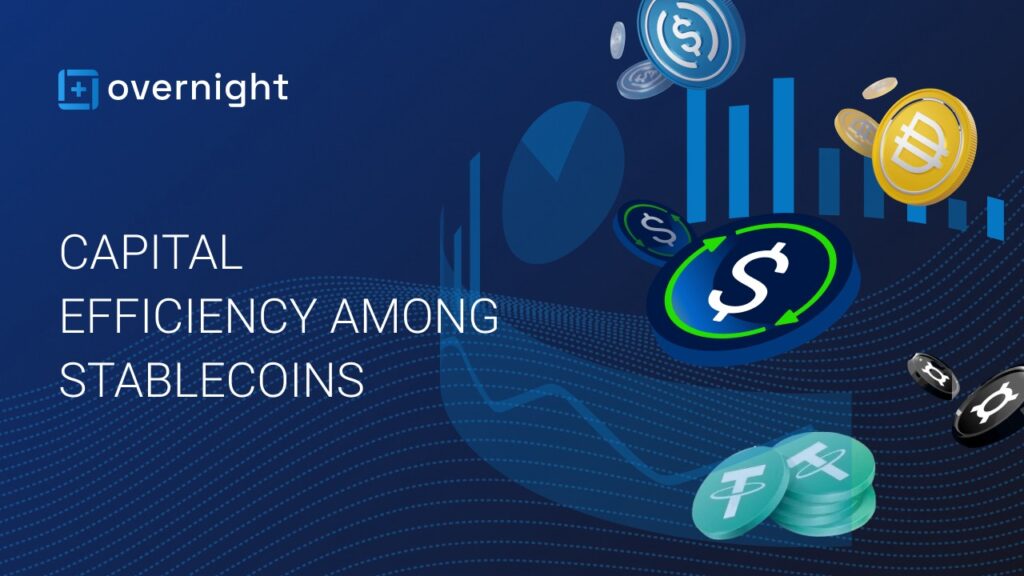Decentralized Finance (or DeFi) has gained prominence and aims to offer intuitive Financial services to its users that would otherwise be unavailable to the wide majority of users. Its unique offering is that anyone can access DeFi owing to it being a permissionless ecosystem; to access the dApps (decentralized applications) on the Blockchain, all you need is an internet connection and a Web 3.0 enabled wallet. DeFi is all about Capital Efficiency as it aims to replace its counterpart — Traditional Finance — to a certain extent and several strives have been made in that regard.
With DeFi, you can do most of the things that you would be able to do so that banks or other financial intermediaries support — lend your assets to earn interest, take out a collateralized loan, trade derivatives, and more — though it doesn’t need any of the cumbersome paperwork that TradFi does. Hence, DeFi is open to all and used by a pseudo-anonymous userbase whereby only your wallet address is visible on the Blockchain.
However, despite the advantages mentioned above, DeFi is notoriously volatile. The prices of blue-chip DeFi assets (Sushi, UNI, BAL, etc) have fallen by as much as 10x ever since bitcoin plunged from its All-Time-Highs of $69,000 last year and hence requires a sense of stability — this is where stablecoins come into play.
What are Stablecoins?
To put it simply, a stablecoin is a digital asset whose value is tied to an outside currency and hence is pegged to it. The “outside currency” can be any asset that the maker decides — pegged to gold or simply fiat. Owing to fiat-pegged stablecoins being more prominent, we’ll be using this analogy in our article.
As mentioned previously, DeFi offers tremendous advantages and one of the fundamental benefits is the ability to interact within a trustless environment. Anyone can send funds to any wallet address across the globe within a matter of seconds.
Owing to the prices of Cryptocurrencies being largely unpredictable lately, stablecoins have surged in prominence. A novice user within the space would like to know how much their portfolio is worth in a week or even a year from now — this is not possible with volatile assets such as cryptocurrencies.
Therefore, stablecoins offer users the best of both worlds: the stability of Traditional Finance and leveraging the unique offerings of DeFi.
For Stablecoins to become more prominent within DeFi, it is quintessential that they become more capital efficient than their TradFi alternatives and encourage a greater onboarding of users to DeFi.
What is Capital Efficiency?
Capital Efficiency can be termed as a ratio that compares how much a company generates revenue from its invested capital (revenue generated/capital invested). In the traditional sense, it represents how much a company manages to generate via the funds that it has — the higher the ratio, the more the corresponding capital efficiency.
Capital Efficiency helps a company analyze whether their operations are yielding them their desired output and whether any improvements can be made in that regard. For startups, Capital Efficiency is a key factor as they have to constantly analyze whether their spending on growth yields its desired revenue. Too much spending may result in them burning too much cash too quickly.
On the other hand, DeFi is still in its infancy and all about the ideals of Capital Efficiency. For stablecoins to become capital efficient, it is important that the collateral yields revenue as well — a higher capital efficiency ratio can be achieved by deploying its collateral across revenue-generating streams.
There are five main types of fiat-pegged stablecoins within DeFi, some of them are collaterally-backed and algorithmically modified while others are a variation of the two. If fewer cents on the dollar are needed to maintain the stablecoin’s peg, then the capital efficiency ratio is high; this is so that the remaining collateral can be put to more efficient use. For example, if a $1 peg can be maintained with as low as 5c of the collateral liquid, then the stablecoin is 95% more capital efficient.
Now that you know what Capital Efficiency in DeFi is and what are stablecoins, let’s explore the major types of Capital Efficiencies employed by them respectively.
Fiat Collateralized Stablecoins (USDC, USDT, TUSD)
Being one of the first stablecoins within the Crypto Markets, fiat collateralized stablecoins essentially started the narrative of having fiat-pegged denominations as a crypto token. In doing so, the collateral is held in their Traditional Finance counterparts and facilitates the conversion of your stablecoins to and from crypto.
The most popular fiat-collateralized stablecoin by market capitalization is USDC — founded by Circle — and the mechanisms used to sustain its peg are quite popular and often used in banking, derivatives, forex, etc.
To put this into perspective, if a user initiates a transaction to buy USDC using fiat currency, then that fiat currency is deposited and stored as one U.S. dollar and the new USDC is minted. If you sell a USD Coin in exchange for fiat currency, then the USDC is burned when the fiat money is transferred back to your bank account. Essentially, USDC serves what’s known as a “fiat-wrapper” or a representative of fiat denominations in crypto.
100% of the collateral for Fiat Collateralized Stablecoin is held in well, fiat. As of writing, Circle has 20.6% of its reserves held in cash within bank accounts whereas the latter (i.e, 79.4%) is held in short-duration US treasuries to generate interest from such an investment. While the exact types of bonds held by Circle remain uncertain, a typical 1 year US treasury bond generates a 3.36% annual return.
Seeing that 79.4% of Circle’s reserve generates an estimated 3.36% annual return and only 20.6% of reserves are required to maintain its peg, we can conclude that USDC is slightly capital efficient.
Algorithmic Stablecoins (UST, AMPL)
Algorithmic Stablecoins, as the name suggests, uses an algorithm to maintain a consistent value. These algorithms usually link two coins and then adjust their price depending on the supply and demand of investors. While an algorithmic stablecoin is pegged to the value of a real-world asset, it is not backed by one — a key differentiating factor from other stablecoins.
The two most prominent algorithmic stablecoins are UST & AMPL, both of which have faced wildfires lately. Previously the Luna Foundation (the protocol behind UST) reached a cumulative $60 Billion in market capitalization (including UST and its governance token, LUNA) before it was wiped out in a matter of days leaving the token next to worthless.
Similarly, AMPL — a different variation of algorithmic stablecoins — has experienced similar turmoils as it utilizes a rebase mechanism to keep its value in check. Although there’s no asset backing AMPL, the value of AMPL tokens held in your wallet either decreases or increases depending on it being under or over its peg. Owing to a lack of a consistent peg, it has lacked a stability mechanism and is currently trading below peg as of writing — the longer it’s below peg, your tokens decrease in value as the supply contracts. AMPL’s market capitalization is also sitting at $54M currently, down from a former high of $680M according to Coingecko.
Despite their inherent problems of a lack of collateralization, algorithmic stablecoins are highly capital efficient owing to almost no collateral being required to sustain their peg. But then again, why buy a stablecoin that has no internal value?
Semi-Algorithmic Stablecoins (FRAX)
UST’s infamous crash has sent shockwaves throughout the stablecoin ecosphere and has raised the importance of collateralization.
FRAX is one such stablecoin that adopts a two-tiered approach and is a hybrid between a collateralized and an algorithmic stablecoin. In doing so, as of currently, 90.75% of each FRAX in circulation is collateralized by USDC whereas the remaining 9.25% is backed by the algorithm that manages the FXS supply (or simply, backed by FXS — its governance token) — this is interchangeable and discussed more below.
The protocol uses several approaches to maintain its peg including peg-stability modules (or speculative arbitrages), establishing deep liquidity pools across DeFi, and increasing or decreasing its collateral ratio depending upon the stablecoin being in an expansion or a contractionary phase.
An expansion phase refers to when FRAX is above its soft-peg of $1, the collateralization ratio decreases owing to increased demand whereas the inverse is applicable during a contractionary phase (i.e, collateral increasing when FRAX is below peg in an attempt to restore peg).
FRAX has had incredible performance thus far and it is important to stress that it initially started off at 100% collateralization; markets determine the collateralization ratio through demand/supply mechanisms and that has achieved tremendous stability thus far.
FRAX recently introduced its v2 which includes an “Algorithmic Market Operations Controller” (AMO). The AMO serves the purpose of deploying its collateral across Yield-Generating sources — currently including Aave, Compound, and Yearn while more can be added through governance — the yields are passed on to veFXS token holders (locked governance token holders) for successfully governing the FRAX Ecosystem.
Considering that lending USDC on AAVE generates a mere 1.88%, the stablecoin is slightly less capital efficient than USDC itself. However, the fact that a mere 90.75% collateral is currently required to maintain FRAX’s peg certainly has a positive impact here (though this is interchangeable).
Over-Collateralized Cryptocurrencies Stablecoins (DAI, MIM)
Over-Collateralized Stablecoins are issued by a user taking out an over-collateralized loan whereby their collateral includes popular cryptocurrencies (Bitcoin, Ethereum, Matic, etc) and their loan is in the shape of a stablecoin. For example, MakerDao allows its users to borrow up to 88% of their posted collateral in DAI — a user posting $100 as collateral can borrow a maximum of $88 in DAI.
In doing so, protocols like these serve the purpose of DeFi’s Decentralized Bank and are an alternative to selling your cryptocurrencies to obtain liquidity — anyone can take out a loan if they so desire.
Since Over-Collateralized stablecoins are well, Over-Collateralized, they are capital inefficient as a collateralization ratio of at least 113% is required to back each DAI in circulation. Moreover, should the collateral fall in value below a predetermined margin (i.e, 113%) compared to the value of Dai tokens released, the collateral will be liquidated by arbitrageurs (called keepers) to keep the MakerDAO system in check and prevent what’s known as a “Bad Debt” from occurring. However, as of currently, each DAI is collateralized by 133.17% which is a relative risk-averse figure.
Furthermore, the inherent flaw with MakerDao is that the assets posted as collateral are not put to use. Compare this with AAVE where your collateral earns lending APYs (lent out to others for interest) while you’ve taken out a loan.
The above factors render DAI largely capital inefficient although they have not affected its prominence — DAI remains the third largest stablecoin by market capitalization.
Yield-Bearing Stablecoins (USD+)
From the discussions previously, we can conclude that a stablecoin should be fully collateralized to maintain its peg, and the collateral being put to its most efficient yet risk-averse use.
This dilemma is solved by USD+, a Yield-Bearing Stablecoin, that deploys its collateral across multiple Yield-Generating sources mostly including stable-to-stable pools. Since its inception, USD+ has generated a whopping 10.3% APY and 100% of its collateral is deployed across such yield-generating pools.
Unlike USDC or FRAX, the yield generated is passed on to its holders as opposed to company profits or governance token holders, respectively, and hence, directly benefiting those that hold USD+.
Therefore, the method of using its collateral across a diversified range of yield sources mentioned above renders USD+ as one of the most capital-efficient yet risk-averse stablecoins within DeFi.
Capital Efficiency within DeFi: A Myth or a Fact?
As DeFi prepares for an increased onboarding of TradFi users, capital efficiency becomes even more important within DeFi as avid yield-hunters look to employ their idle assets to use in an attempt to generate yields.
While Capital Efficiency within DeFi certainly exists, it is lacking and this gap is bridged by the Yield-Bearing stablecoin, USD+ that makes Yield-Farming as simple as buying a token; this amounts to tremendous capital efficiency and far exceeds its TradFi counterparts.



